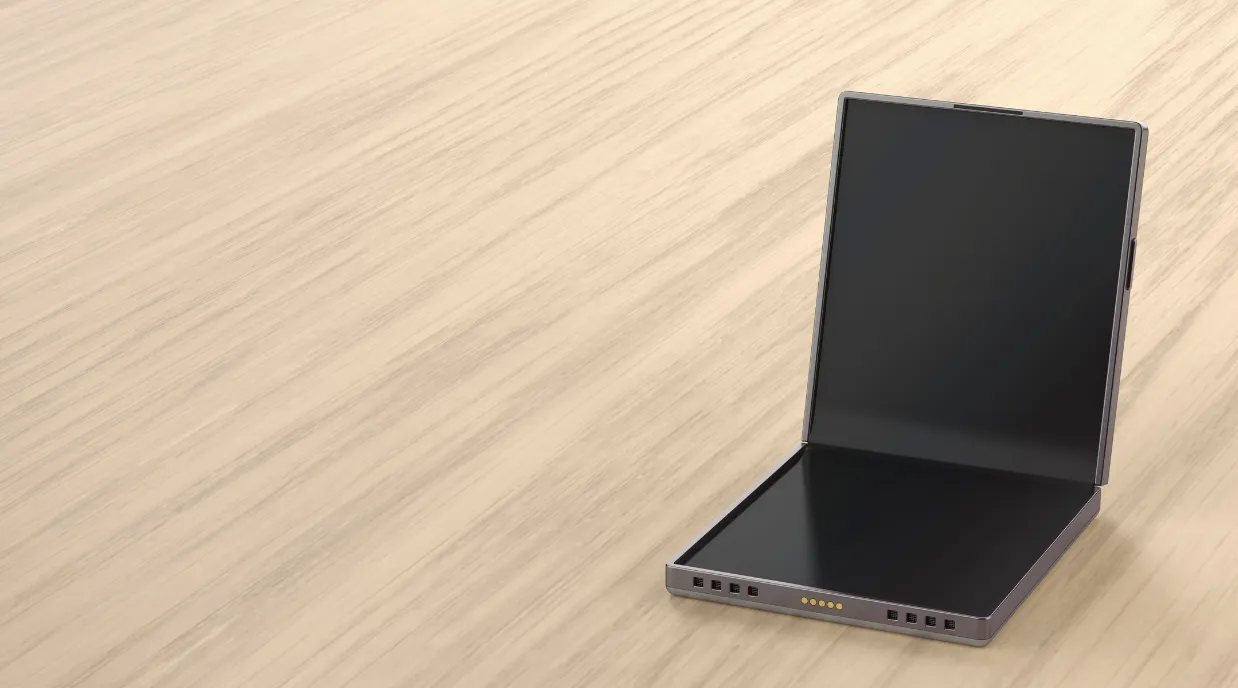The Rise of Foldable Devices: Are They Worth It in 2025?

In the ever-evolving world of technology, foldable devices have emerged as one of the most intriguing innovations of the past decade.
From smartphones that unfold into tablets to laptops with flexible screens, these gadgets promise to redefine how we interact with technology.
But as we approach 2025, the question remains: are they truly worth the investment, or are they just a flashy gimmick?
Let’s dive into the pros, cons, and future potential of these cutting-edge devices.
The Evolution of Foldable Devices: From Concept to Reality
The idea of foldable devices isn’t new.
Sci-fi movies and tech prototypes have teased the concept for years.
However, it wasn’t until Samsung launched the Galaxy Fold in 2019 that the world saw a commercially viable product.
Since then, companies like Huawei, Motorola, and Microsoft have joined the race, each offering their own take on flexible technology.
But why the sudden surge in interest?
The answer lies in the demand for versatility.
Consumers want devices that can adapt to their needs—whether it’s a phone that transforms into a tablet for media consumption or a laptop that folds into a compact form for portability.
According to a report by Counterpoint Research, the global market for foldable devices is expected to grow by 50% annually, reaching 100 million units shipped by 2025.
This statistic highlights the growing appetite for innovation, but it also raises questions about practicality and value.
As manufacturers refine their designs, we can expect to see improvements in screen technology and hinge mechanisms, addressing some of the initial concerns regarding durability.
Moreover, the rise of 5G technology will likely enhance the appeal of foldable devices, allowing for faster data speeds and improved streaming capabilities.
For more insights on the evolution of foldable technology, check out TechRadar.
The Pros: Why Foldable Devices Are Gaining Traction
- Enhanced Multitasking and Productivity
One of the biggest selling points of foldable devices is their ability to multitask.
For instance, the Samsung Galaxy Z Fold 5 allows users to run three apps simultaneously on its expansive screen.
This feature is a game-changer for professionals who need to juggle emails, spreadsheets, and video calls on the go.
- Portability Meets Functionality
Foldable smartphones combine the convenience of a compact phone with the utility of a tablet.
When folded, they fit easily into your pocket; when unfolded, they offer a larger display for gaming, streaming, or reading.
This duality appeals to users who want the best of both worlds.
- Innovation and Status Symbol
Let’s face it: owning a foldable device in 2025 is still a statement.
These gadgets are at the forefront of technology, and early adopters often see them as a symbol of being tech-savvy and forward-thinking.
Additionally, foldable devices often come with unique features that set them apart from traditional models, such as customizable screens and innovative user interfaces.
These elements not only enhance the overall experience but also attract those who enjoy exploring the latest advancements in tech.
The Cons: Challenges That Hold Foldable Devices Back
- Durability Concerns
Despite advancements, durability remains a significant issue.
The folding mechanism and flexible screens are prone to wear and tear.
For example, early models of the Galaxy Fold faced criticism for screen cracks and hinge problems.
While manufacturers have made improvements, the long-term reliability of these devices is still under scrutiny.
- High Price Tags
Foldable technology doesn’t come cheap.
The average price of a foldable device in 2025 hovers around $1,500, making it a luxury item for many.
When compared to traditional smartphones or tablets, the value proposition becomes less clear.
- Limited App Optimization
Not all apps are designed to take advantage of foldable screens.
This can lead to awkward scaling or wasted screen space, diminishing the user experience.
Developers are slowly catching up, but the ecosystem still has room for improvement.
Moreover, as foldable devices gain popularity, developers will need to prioritize optimizing their apps for these screens to ensure a seamless user experience.
This will be crucial for maintaining user satisfaction and encouraging wider adoption of foldable technology.
+ Best Budget-Friendly Tech Gadgets of 2025

Foldable Devices in 2025: What’s Changed?
As we look ahead, several trends are shaping the future of foldable devices:
- Improved Materials and Durability
Manufacturers are investing heavily in stronger materials, such as ultra-thin glass and more robust hinges.
These advancements aim to address the durability concerns that have plagued earlier models.
- Expanded Use Cases
Beyond smartphones and tablets, foldable technology is making its way into other categories.
For example, Lenovo’s ThinkPad X1 Fold is a fully functional laptop with a foldable screen, offering a glimpse into the future of portable computing.
- Ecosystem Integration
Companies are working to create a seamless ecosystem for foldable devices.
This includes better integration with wearables, smart home devices, and cloud services.
The goal is to make foldable gadgets an integral part of the connected lifestyle.
As these devices become more prevalent, we can expect to see a surge in accessories and complementary products designed specifically for foldable technology.
This ecosystem will enhance the user experience and encourage more people to explore the possibilities of foldable devices.
++ Gaming Consoles of 2025: PS6, Xbox Series Z, and Beyond
Are Foldable Devices Worth It in 2025? A Balanced Perspective
To determine whether foldable devices are worth the investment, let’s break it down into two key factors: practicality and cost.
Practicality
For tech enthusiasts and professionals who value innovation and multitasking, foldable gadgets offer undeniable benefits.
However, for the average user who primarily uses their phone for calls, texts, and social media, the added functionality may not justify the switch.
Additionally, as the technology matures, we may see more affordable options that cater to a broader audience, making foldable devices accessible to those who may not be early adopters.
Cost
The high price of foldable devices is a significant barrier.
While prices are expected to drop as the technology matures, they will likely remain premium for the foreseeable future.
For many, the cost may outweigh the benefits.
As competition increases and more manufacturers enter the foldable market, we can anticipate price reductions and more budget-friendly options becoming available over time.
This could ultimately make foldable technology more appealing to a wider range of consumers.

The Verdict: Who Should Buy Foldable Devices in 2025?
Foldable technology is undoubtedly impressive, but it’s not for everyone.
Here’s a quick guide to help you decide:
| User Profile | Recommendation |
|---|---|
| Tech Enthusiasts | Go for it! You’ll appreciate the innovation and cutting-edge features. |
| Professionals | Worth considering if multitasking and portability are priorities. |
| Casual Users | Stick with traditional devices for now; the added cost may not be justified. |
| Budget-Conscious Buyers | Wait for prices to drop or consider refurbished models. |
If you find yourself in the first two categories, investing in a foldable device could enhance your daily life.
However, if you identify more with the casual or budget-conscious user profiles, it might be wise to hold off for now.
The Future of Foldable Devices: What’s Next?
The journey of foldable devices is just beginning.
As technology advances, we can expect to see even more creative applications.
Imagine foldable smartwatches, rollable TVs, or even foldable AR glasses.
The possibilities are endless, and the industry is only scratching the surface.
However, for foldable gadgets to truly go mainstream, manufacturers must address key challenges like durability, affordability, and app optimization.
Until then, they will remain a niche product for early adopters and tech enthusiasts.
As the market matures, we may also see collaborations between tech companies, leading to innovative features that leverage the strengths of various devices.
This could further enhance the appeal of foldable technology and encourage widespread adoption.
Final Thoughts: A Revolution in Progress
Foldable devices represent a bold step forward in the world of technology.
They challenge the status quo and push the boundaries of what’s possible.
But like any innovation, they come with trade-offs.
As we move into 2025, the decision to invest in a foldable device ultimately depends on your needs, budget, and willingness to embrace the future.
Whether you’re an early adopter or a cautious consumer, one thing is clear: the rise of foldable technology is reshaping the tech landscape, and its impact will only grow in the years to come.
So, are they worth it?
The answer lies in your hands—literally and figuratively.
Tables for Quick Reference
Table 1: Pros and Cons of Foldable Devices
| Pros | Cons |
|---|---|
| Enhanced multitasking | Durability concerns |
| Portability and functionality | High price tags |
| Innovation and status symbol | Limited app optimization |
Table 2: Foldable Device Market Growth (2021-2025)
| Year | Units Shipped (Millions) | Growth Rate |
|---|---|---|
| 2021 | 5 | 200% |
| 2022 | 10 | 100% |
| 2023 | 20 | 100% |
| 2024 | 50 | 150% |
| 2025 | 100 | 100% |
In conclusion, foldable devices are a fascinating blend of innovation and practicality, but they’re not without their flaws.
As the technology continues to evolve, they may become a staple in our digital lives.
For now, the choice to embrace this trend depends on your priorities and willingness to invest in the future of tech.
